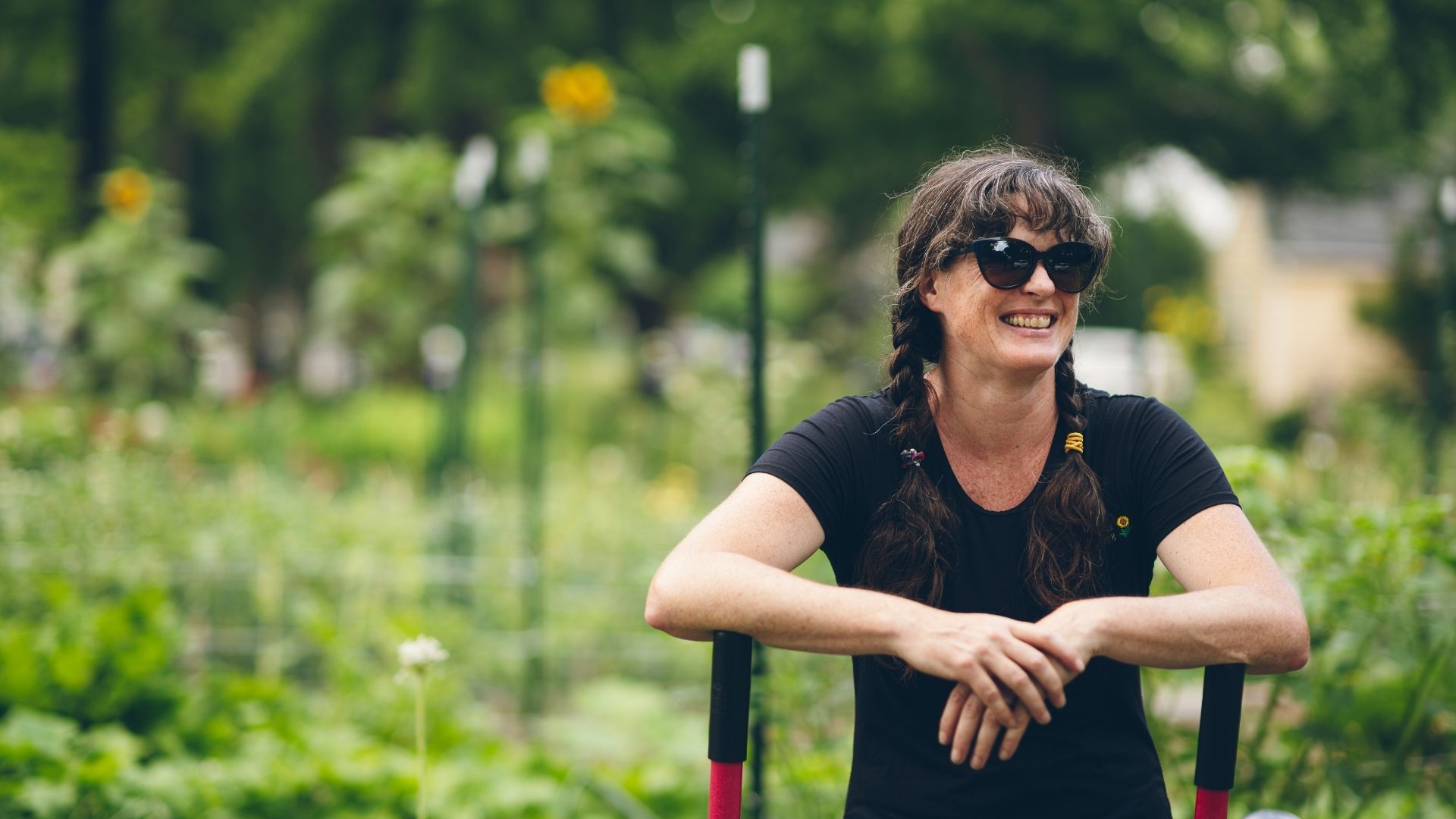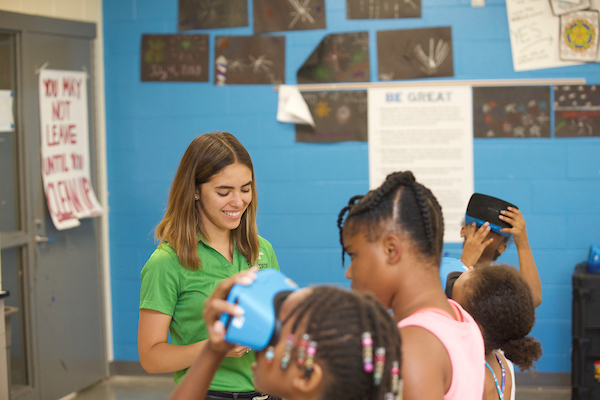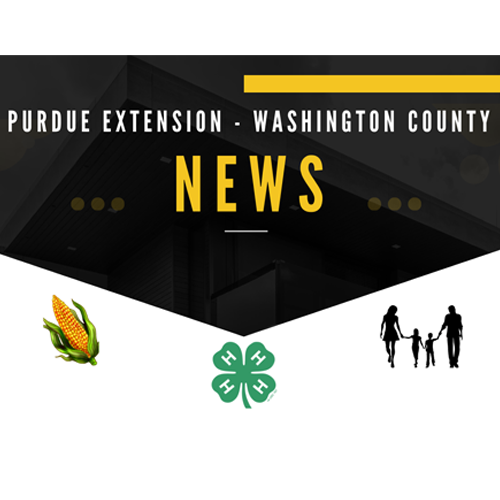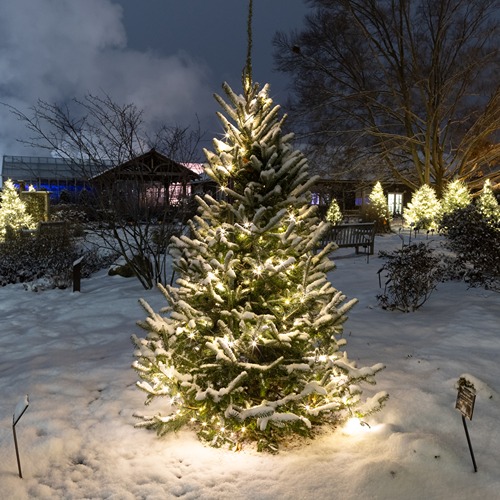County fair season concludes, but memories last a lifetime
Each summer, communities across Indiana gather to experience their county fair. With the smell of fried food lingering in the air, fairgoers are entertained with demolition derbies and concerts, catch up with friends while looking at antique tractors, and maybe even ride on the Ferris wheel. However, no matter what part of the state you’re in, one aspect of the fair remains constant– 4-H members demonstrating their skills and serving their communities while having fun.
“For some, the county fair is full of traditions that were started by the older generations in the grandstand. For others, the county fair is a new opportunity to grow in a community while building self-confidence. It’s through these differing and shared experiences that the entirety of the 4-H program in Indiana is challenged and grows,” said Casey Mull, Purdue Extension assistant director and program leader for 4-H youth development.
While Indiana 4-H and county fairs occur in all 92 Indiana counties, no two are the same. Some fairs are hosted on rented ground while others are on 4-H-owned property. Sometimes amusement rides and other entertainment events are offered to fairgoers, and other fairs solely focus on 4-H. Fairs are held from the beginning of June until the fall, with the 2022 Dekalb County Free Fall Fair concluding on Oct. 1 this year.
Differences continue behind the scenes. There are three primary types of fair organizations in Indiana: combined 4-H council and fair board, a separate 4-H council and fair board, and a 4-H fair coordinated jointly with a county fair board.
As Indiana 4-H program leader, Mull recognizes the importance of connecting with 4-H leadership across the state. His recent efforts to understand local perspectives and priorities for county fairs and 4-H as a whole include meet-and-greet sessions in Indiana communities and listening sessions with 4-H council presidents during the 2022 Indiana State Fair.
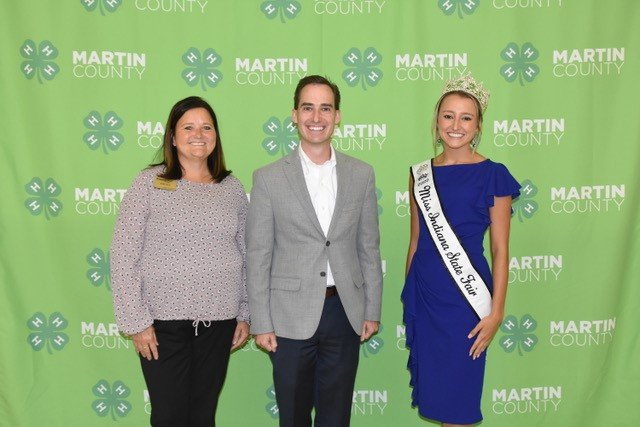 Dena Held, Purdue Extension Martin County director and 4-H youth development educator, Casey Mull, Purdue Extension assistant director and program leader for 4-H youth development and Alyssa McKillip, 10-year 4-H member and 2022 Miss Indiana State Fair, stand together at the Martin County meet-and-greet event.
Dena Held, Purdue Extension Martin County director and 4-H youth development educator, Casey Mull, Purdue Extension assistant director and program leader for 4-H youth development and Alyssa McKillip, 10-year 4-H member and 2022 Miss Indiana State Fair, stand together at the Martin County meet-and-greet event. “4-H council may be called something different from county to county. Sometimes the 4-H fair board is a part of the council, and other times the fair board isn’t an entity of 4-H at all. Despite differing language, traditions and organization structures, I’m confident every county fair is collaborating with the community to create lasting experiences,” added Mull.
Here are just a few county fair stories that demonstrate the differences and common goals.
Henry County
While you might not know the name, you most likely will recognize the face of Tim Trennepohl if you’ve attended the Henry County Fair. Trennepohl has worked in the Shenandoah 4-H Club lemon shake-up stand for approximately 30 years, beginning when he was a 4-H’er through years of 4-H volunteering and being a 4-H parent. The popular stand still sells lemon shake-ups for one dollar, with the proceeds going to Shenandoah 4-H Club activities and their ten-year member scholarship fund.
“We have close to 400 youth members who are the future leaders of our community. 4-H helps them build skills to go out into the community and make a difference and lead beyond their county 4-H club. It’s also a testament to 4-H that we have so many youth come back to be volunteers and leaders in our county as well as Indiana or wherever they choose to go,” says Kelsey Meyers, Purdue Extension Henry County director and 4-H youth development/health and human sciences educator.
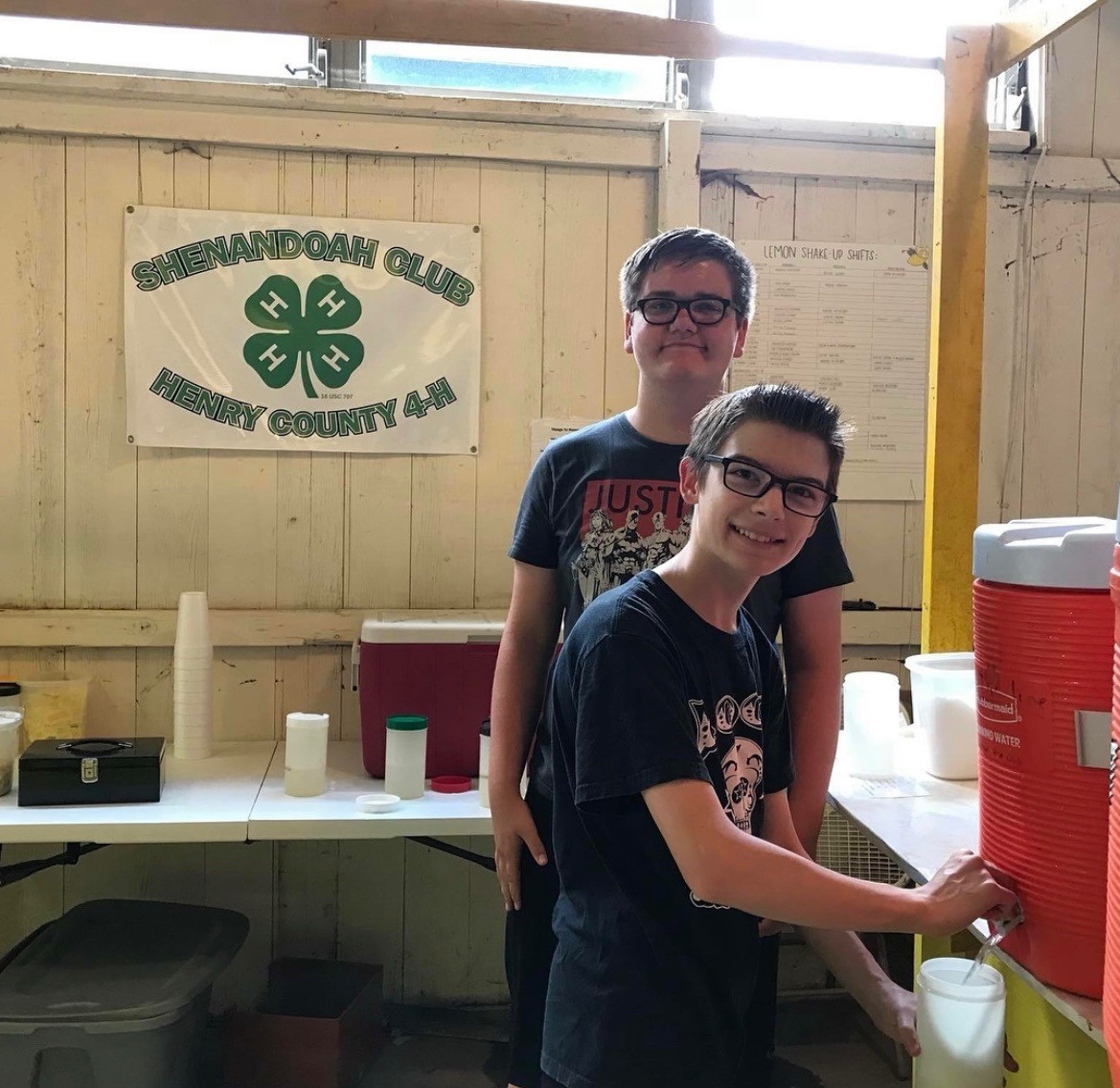 Max and Mason, current Shenandoah Club 4-H members, serve lemon shake-ups at the 2022 Henry County Fair.
Max and Mason, current Shenandoah Club 4-H members, serve lemon shake-ups at the 2022 Henry County Fair. Morgan County
If you happen to attend the Morgan County Fair on the last night, you can watch the 4-H battle of the barns. Teams of youth will navigate their way through an obstacle course, carrying greased watermelons and overcoming other challenges to see which barn can come out on top.
Long before the last hurrah at the battle of the barns, youth were busy learning lifelong lessons in animal care, career exploration and serving their community. Rena Sheldon, Purdue Extension – Morgan County Extension director and 4-H youth development educator, specifically mentions the impact of the service dog program for the county. With their family, youth will train a puppy for a year so that the dog can go on to become a service dog.
“It’s not the project or animal, but the person who emerges changed from these opportunities. If I can help build young people who will lead in their communities be good citizens and overall understand the community better, that’s the impact I want to make,” adds Sheldon.
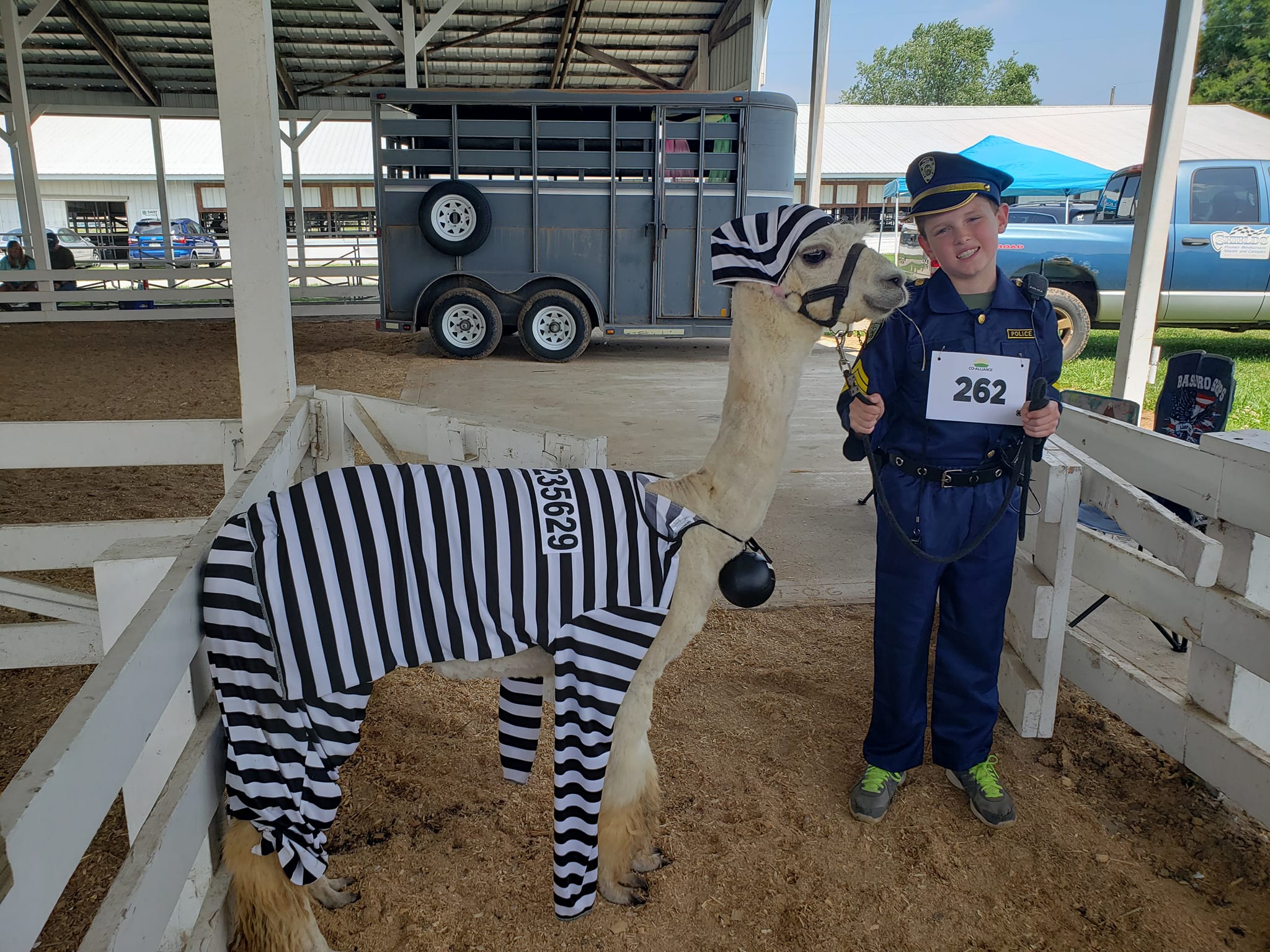 Joseph, Morgan County 4-H’er, and his alpaca, Gwen, are posing during the Llama/Alpaca costume class. Mini 4-H members also have the opportunity to participate during the Morgan County Fair in the pet parade, where they too dress up their animals.
Joseph, Morgan County 4-H’er, and his alpaca, Gwen, are posing during the Llama/Alpaca costume class. Mini 4-H members also have the opportunity to participate during the Morgan County Fair in the pet parade, where they too dress up their animals. Randolph County
Purdue Extension – Randolph County’s office is located on the fairgrounds and each year opens for a week-long 4-H fair. Through a 100-year lease with Randolph County, Extension and the 4-H program can use the grounds with a 4-H board overseeing decisions about the facility and 4-H county policies. The 4-H board is comprised of adult and youth members of the community.
For the first time this year, a local FFA chapter hosted a livestock show for youth with disabilities. 4-H and FFA members alike helped youth in their community exhibit animals
“For kids, the fair is the highlight of their summer – getting to show off what they’ve learned and accomplished from the past year while interacting with other youth within the whole 4-H program,” says Julie Wilson, Purdue Extension - Randolph County 4-H youth development educator. “And for parents and community members, it’s a great social event to connect with people they haven’t seen in a while. It’s a great community event for all.”
